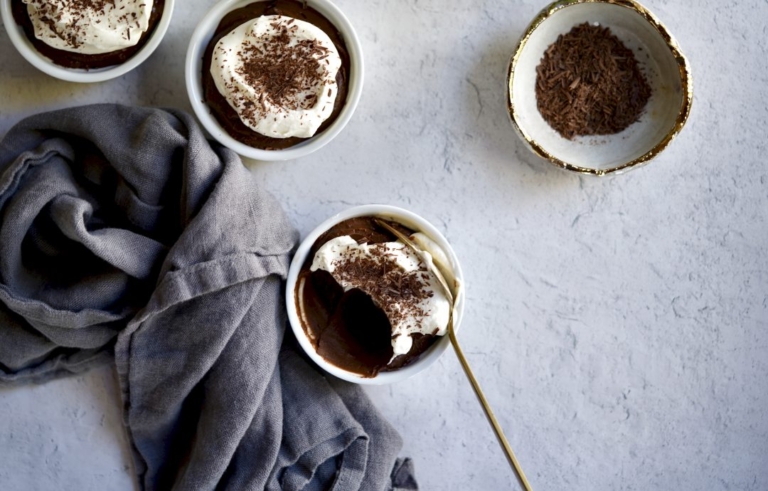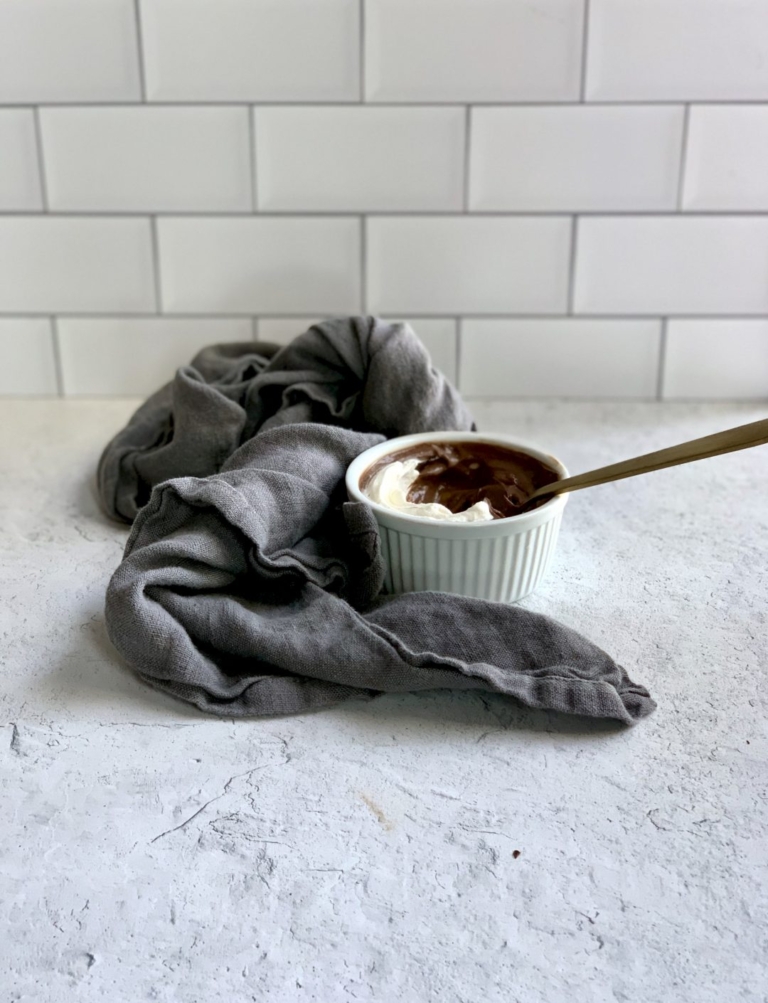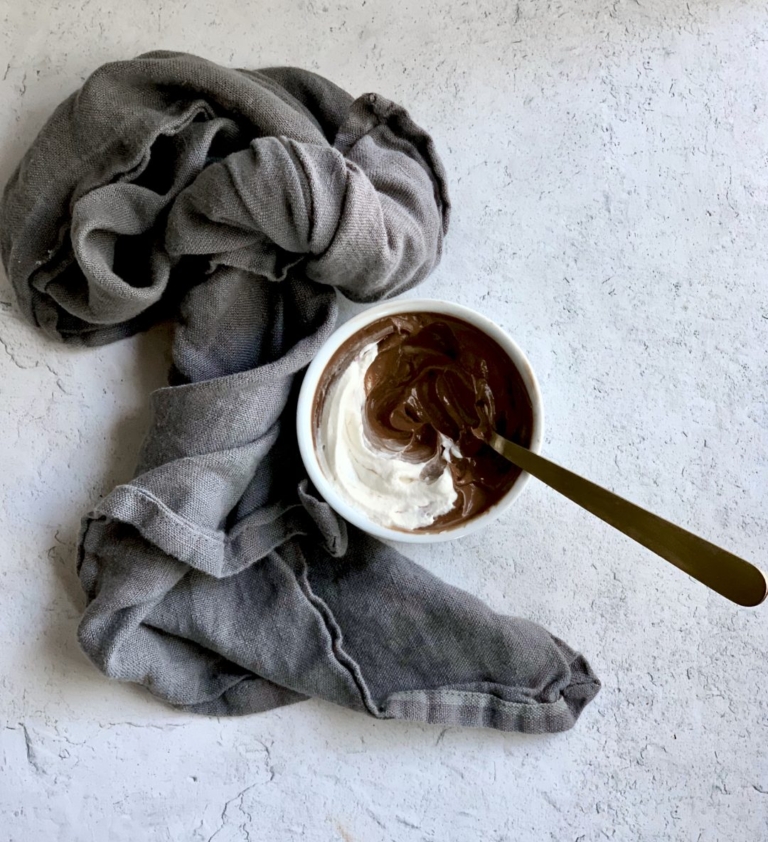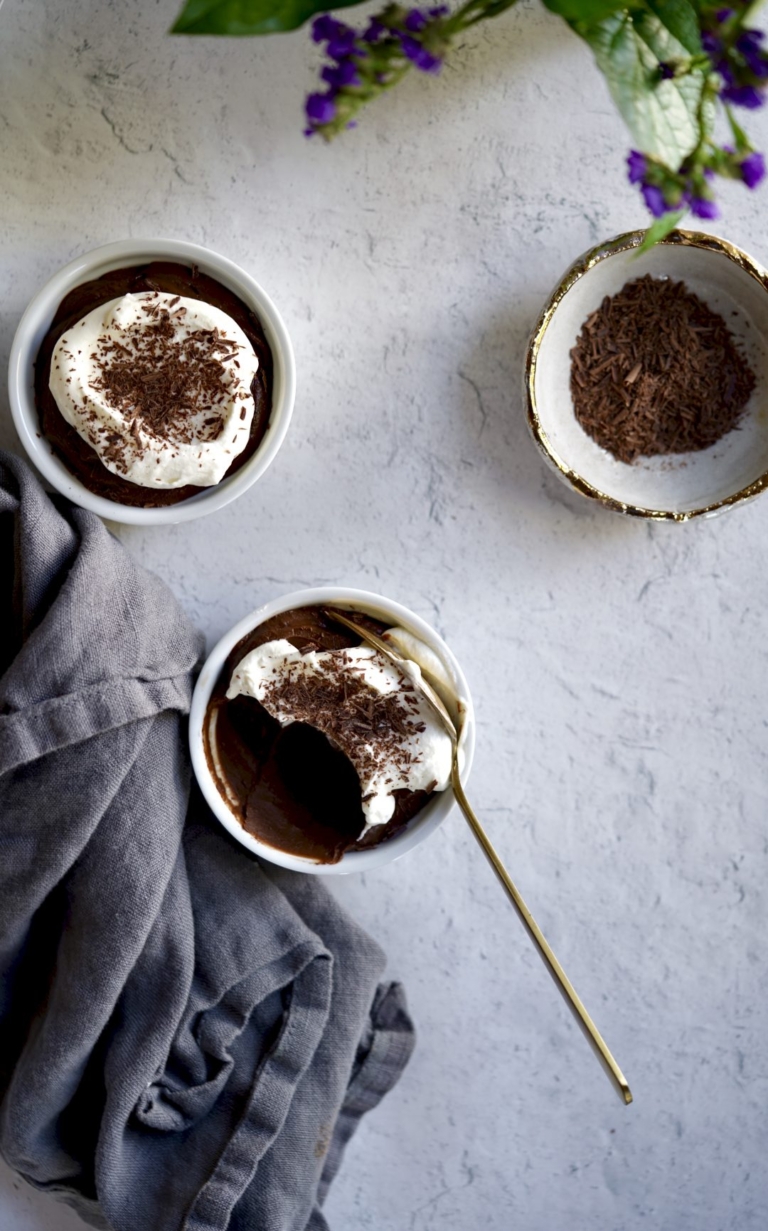Chocolate Pudding

Although I am not a die-hard chocolate fanatic, many I know are. This recipe is for them. Chocolate can make many wonderful things, pudding is one of them. Chocolate pudding was a childhood treat that sometimes appeared in my school lunch box. But the kind I ate was not the homemade kind, it came in a plastic cup with a peel-back foil top. It was also associated with a catchy jingle and Bill Cosby, but I have since tried to erase that latter association from my mind completely.
Puddings vs. Custard
Many people get puddings and custards confused. Although similar in appearance, there are some subtle differences between the two. Pudding has a lighter consistency and looks more whipped than a custard which has a thicker texture. Pudding is a sweetened milk or cream-based mixture, thickened with starch (typically cornstarch or flour) that’s cooked on the stove. In contrast, custards are milk or cream-based, thickened with egg, that are typically firmer, and commonly baked with a water bath. Creme brûlée is the most well-known of all custards.
Pudding and Custards in History
Pudding’s history is a confusing one. Ancient Roman cooks discovered that eggs could bind ingredients. They are credited for creating several egg-based dishes including custards. The creamy rich dessert pudding we Americans know is more closely related to the custard of long ago. Medieval puddings were primarily savory and meat-based. The British claim pudding as part of their culinary heritage. 17th-century English puddings were either savory (meat-based) or sweet (made with nuts & sugar) and were often boiled. But by the end of the 18th century traditional English puddings no longer included meat. 19th-century puddings were still boiled, but started more cake-like, plum pudding is a good example.
In 19th century America, boiled pudding became less common to feed families because food was plentiful. Around the same time an English chemist named Alfred Bird introduced custard powder as an alternative to egg thickeners. Soon after Americans began using custard powder and other cornstarch derivatives as thickeners for a variety of custard and pudding-type desserts. This invention is credited for bringing dessert pudding into the modern day.
Most puddings are served cold, though a few are prepared warm. Both rice puddings and chocolate puddings are two puddings that can get away with being served warm or cold. Homemade chocolate pudding is a rich, flavorful, and decadent treat so popular it has earned its day, National Chocolate Pudding Day is June 26th, in case you were wondering, but if you’re a chocolate lover, no need to wait for that day to make this special treat.
Chocolate Pudding
Ingredients:
- 2 cups whole milk
- 6 egg yolks
- 3/4 cup sugar
- 3 tablespoons all-purpose flour
- 2 tablespoons good quality cocoa powder
- 6 ounces semisweet chocolate, finely chopped
- 2 ounces unsweetened chocolate, finely chopped
- 1 1/2 teaspoons vanilla extract
- Homemade whipped cream, optional
- Shaved chocolate, optional
Directions:
- In a medium saucepan add the milk and place over medium-high heat. When the milk just begins to simmer, remove it from the heat. Set aside.
- In a medium bowl add the egg yolks and sugar and whisk until smooth and pale yellow in color. Sift in the flour and cocoa powder and whisk to blend.
- Slowly and carefully pour the warm milk into the egg mixture while whisking continuously. Pour the mixture back into the saucepan, place over medium heat, and bring to a boil while stirring constantly. Reduce the heat to low and cook, while stirring until the mixture thickens, about 4-5 minutes.
- Place the chopped chocolate in a large mixing bowl. Pour the milk-egg mixture through a fine-mesh strainer and mix until all the chocolate has melted. Stir in the vanilla.
- Spoon the pudding into 6 ramekins or serving cups, place in the refrigerator, and chill for at least 2 hours. Serve with homemade, lightly sweetened, whipped cream and shaved chocolate






